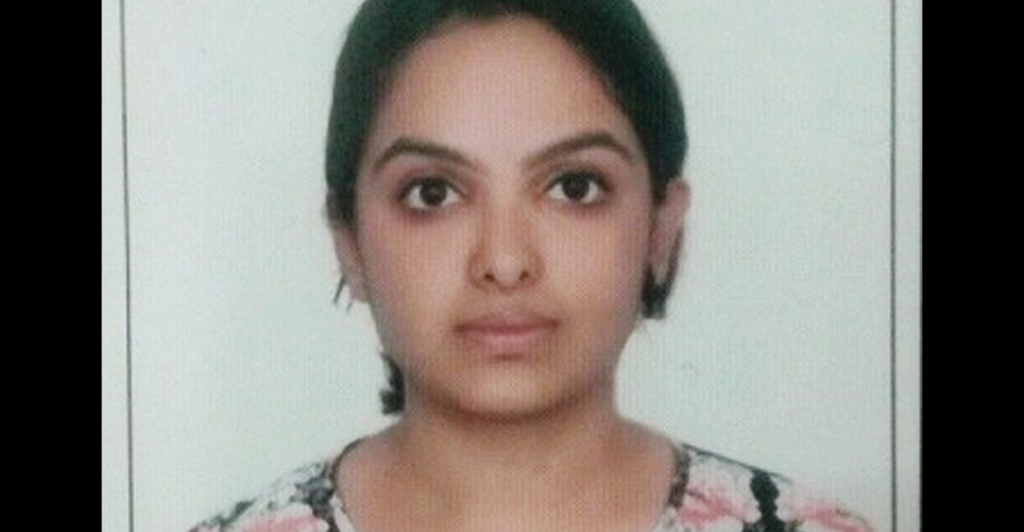We’re taking time to get to know the members of the GSA’s Early Career Scientist Committees. Join us to learn more about our early career scientist advocates.
Ashitha SNM
Multimedia Subcommittee
Indian National Institute of Mental Health and Neuro Sciences
Research Interest:
It was an instant connection with genetics, and then there was no looking back!
Having grown up in a country of millions with extensive family trees, I found that studying large pedigrees brought a sense of excitement and purpose. With the increasing rates of neurodevelopmental disorders in India, I instinctively decided to utilize my passion for genetics to address this growing societal concern. Thus, I obtained a PhD in genetics for the study of genes implicated in autism spectrum disorders (ASD), which I continued through my post-doctoral research. Subsequently, I joined the National Institute of Mental Health and Neuro Sciences (NIMHANS) as an Innovation in Science Pursuit for Inspired Research (INSPIRE) faculty fellow, under the aegis of the Government of India. I began my independent research on the neuroimmune dynamics of ASD. My project aims to investigate the association of immune overdrive with the occurrence of ASD and to study the mechanisms of immune activation using patient-derived induced pluripotent stem cells (iPSCs).
As a PhD-trained scientist, you have many career options. What interests you the most?
I have always been determined to pursue a career that impacts society. I realized early that a profession in academic research would provide me with numerous outreach capabilities. While working within the Indian research environment poses certain challenges, the societal implications are manifold. The genetic pool of the Indian demography remains relatively unexplored for neurodevelopmental disorders. The Department of Child & Adolescent Psychiatry of NIMHANS—a central government institute—caters to the larger rural and urban population of the country and sees thousands of patients monthly. Such conditions therefore make it suitable to conduct extensive studies to identify population-specific genetic determinants of developmental anomalies prevalent in India.
These efforts are crucial to the advancement of the field of neuropsychiatry genetics. Importantly, they aid genetic counseling and provide better medical guidance to high-risk families and the rural population of India who cannot afford it. While research avenues are abundant, translational research with a potential to impact patient care is limited and difficult. Having had the opportunity to start early, I would like to continue on this path of translational neuropsychiatry genetics research.
In addition to your research, how do you want to advance the scientific enterprise?
“Catch them young and help them grow.” I aim to dedicate a significant amount of my spare time to identifying and mentoring younger, enthusiastic learners in order to encourage their curiosity and instill a scientific temperament towards seeking answers. Our lab keeps its research within the reach of anyone interested, and we aim to create programs that invite young, eager minds to intern with us and experience neuroscience firsthand. We will create and distribute resource materials (like animations, posters, videos, and talks) in regional languages for rural students; conduct lab tours and summer camps for interested school and undergraduate students; and use social media, urban radio talk shows, and popular audio applications to build a sense of excitement and curiosity among youngsters about the fascinating field of neuroscience research.
“A job half done is as good as none.” One of the most important responsibilities of science is to facilitate the removal of superstitions and social stigma. We hope to engage remote rural communities by organizing live talks on genetics and neurodevelopmental disorders in regional languages via the All India Radio channels. Through local television news channels and newspaper articles, we hope to keep the public informed about various research findings, and the relevance of these findings to their lives. Additionally, through GSA, I wish to extend access to GSA multimedia resources to the larger non-scientific, low-income, less-educated community of developing countries.
“Help each other to help ourselves.” Science is a community endeavour. Each step forward in research is a step closer to our common goal of bettering lives. I will personally strive to create a mutually supportive, all-inclusive, diverse, harmonious, and accessible learning environment. We may be good individually, but together we are better.
As a leader within the Genetics Society of America, what do you hope to accomplish?
A key metric of scientific success lies in how well it communicates the implications of the science to the general public. The multimedia platform has the maximum outreach capacity, extending beyond language barriers. While I am currently learning the operations of GSA, I am eager to utilize this unique opportunity to educate myself in the nitty-gritty of effective scientific communication. I hope to expand the teachings of GSA beyond the highly literate world. Working from a contrasting time zone is highly challenging, but I am honoured to work with the most inspiring and supportive team. GSA has provided me with a platform to network and seek peer assistance. Most importantly, GSA has broadened my outlook on research. Today, I am aware that research is much more than publishing articles. GSA has provided me with the necessary peer support to sustain an arduous journey ahead. I wish to pass on these innumerous lessons from GSA to my peers in all ways possible.
Previous leadership experience
100th Indian Science Congress, Organizing Committee, Student Member
Organizer, 1st Genetic Alumni Meetings, University of Mysore




